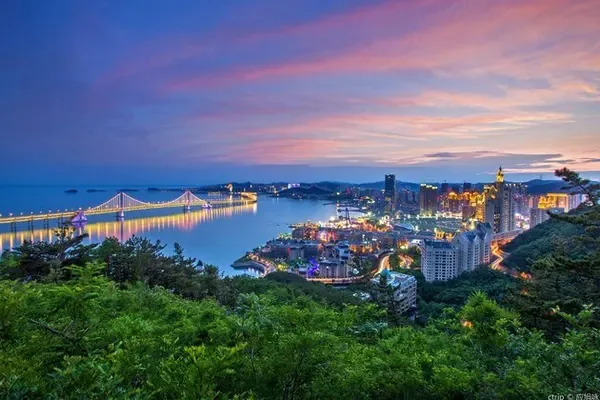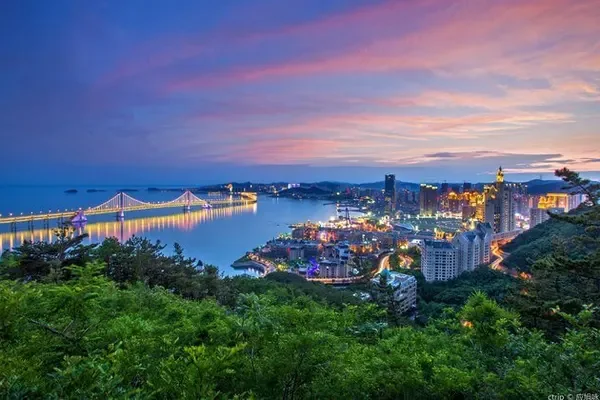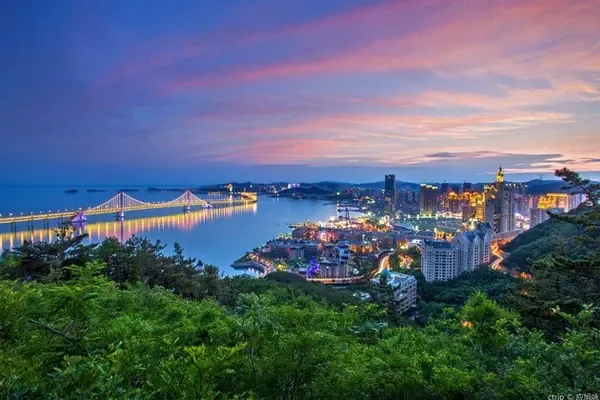Rock paintings are found all over the world, and the earliest rock paintings were discovered in Europe in the 17th century. In 1627, a teacher in Norway discovered cave paintings, but they did not attract much attention. It was not until the 19th century that magnificent cave paintings were discovered in France and Italy that they caused a sensation. The discovery of rock paintings in modern my country was in Fujian in 1915, and the discovery of rock paintings in Helan Mountain was in 1969. Li Xiangshi, who was working in the Aiwei Association of Helan County at that time, accidentally discovered Helankou rock paintings while checking the work here. It has received great attention, but it was only in the 1990s that the rock paintings of Helan Mountain became known to the world, and they were effectively protected after 2000.

The Yinchuan World Rock Art Museum is located in the Helan Mountain Rock Art Scenic Area. It was completed in 2008. The content of rock art in the Rock Art Museum is very rich, including almost all the contents of rock art in the world, including animal images, portraits, body paintings, life images, symbols and Patterns and other five categories. The Rock Art Museum has collected and donated more than 3,000 petroglyph catalogs, rubbings, objects, and contemporary original artworks from more than 70 countries and 150 regions, and selected 546 exquisite pieces for display.

According to reports, 30,000 years ago, there were human activities in Ningxia. They multiplied and multiplied in the Helan Mountain area, creating primitive plastic arts represented by Helan Mountain rock paintings. Ningxia is rich in rock art relics, and five rock art areas have been discovered successively, especially the Damaidi rock art in Zhongwei and the Helan Mountain rock art.
Rock Paintings in Damaidi, Zhongwei

The barley field is a desert deep in the Ningbei Mountains of the Ningxia Hui Autonomous Region. There are no people living here, and some plants such as jujube and camel cape grow sparsely. Weining North Mountain and Helan Mountain form a corner opposite to each other, and the Yellow River turns from this point to travel northward with Helan Mountain.

The barley field is about 50 kilometers from east to west, 25-30 kilometers wide from north to south, and 1400-1600 meters above sea level. Surrounded by mountains on all sides, there are many hills in the middle, ravines and ravines, and there are few people. However, more than 3,000 groups and more than 8,000 individual petroglyphs are densely carved on these mountain ridges, ravines and stone walls, with an average of more than 200 groups per square kilometer. , large in scale and rich in content, are rare in China and even in the world.


Helan Mountain Rock Paintings
Since ancient times, Helan Mountain has been the place where the ancient ethnic minorities in northern my country thrived and created through labor. Huns, Xianbei, Royal, Turks, Dangxiang and other nomadic peoples lived here one after another. Although some ethnic groups have disappeared, migrated, and changed, their glorious achievements, tragic historical process and arduous struggles, as well as splendid culture and art, outstanding talents, and rich imaginations are carved on the huge rocks of Helan Mountain. He left indelible handwriting and left a rich cultural heritage to future generations. The petroglyphs known as "rock newspapers" are evidence of historical authenticity.

The ancient petroglyphs of Helan Mountain may have been carved on the hard and flat rock walls by the ethnic minority people living in the mountains, forests and grasslands with simple and rough tools. Analyzed from the content and carving techniques of rock paintings, they belong to the products of different historical periods. It is a true record of human social life, production and development in a certain environment, and a reproduction of the simple art of ancient people's life.



The petroglyphs of Mount Helan were really known to the outside world when "Li Xiangshi discovered ancient petroglyphs and Xixia characters at the eastern foot of Helan Mountain" published by "Ningxia Science Popularization News" on January 9, 1984. During the Ningxia Cultural Relics Survey in this year, cultural relics workers discovered the distribution of petroglyphs in more than ten mountain passes at the eastern foot of Helan Mountain, and recorded and published a large number of petroglyphs. sensation. Especially with the holding of the "91 International Rock Art Committee Annual Conference and Ningxia International Rock Art Symposium" in Yinchuan in October 1991, Helan Mountain Rock Art, as a historical and cultural heritage of Ningxia, has attracted more and more attention from all walks of life and has gradually become recognized by the world. Know.
According to the survey, the Helan Mountain petroglyphs are distributed in 27 locations in three cities and nine counties (districts) at the eastern foot of Helan Mountain in Ningxia. Among them, there are 12 petroglyph spots at the eastern foot of Helan Mountain in Yinchuan City. From north to south, there are Daxifenggou, Xiaoxifenggou, Baihugou, Qiqikou, Helankou, Suyukou, Huihuigou, Baisikou, Shuijikou, Gunzhongkou, Hongqigou and Liuqukou.

The petroglyphs of Helan Mountain are generally distributed on the mountains inside and outside the mouth of the ditch and on the desert grassland of the alluvial fan outside the mouth of the ditch. The distribution of Helan Mountain petroglyphs in Yinchuan has obvious geomorphic features. From the north of Suyukou to Daxifenggou, the petroglyphs are mostly distributed on the mountains inside and outside the gully mouth, and there are also a large number of petroglyphs distributed on the desert grassland of the diluvial fan in front of the piedmont. From the south of Suyukou to Liuqukou, there are very few mountain rock paintings, and there are almost no rock paintings on the desert grassland.

Among the tens of thousands of petroglyphs on Helan Mountain, human faces are very distinctive. He Jide, the former director of the Rock Art Management Office of Helan Mountain, said that looking at the rock art of the entire earth, the most common human faces in the rock art images are mostly concentrated in the Pacific Rim. There are 11 countries and regions in this region. However, Helan Mountain, which is far away from the Pacific Rim, has become the area with the most concentrated human faces and the richest graphics in the world with nearly a thousand pieces.

This has posed a difficult problem for scholars that has not yet been solved. What kind of cultural information does the rock painting of Helan Mountain reveal? Is it a product of China itself or is it the result of the same culture as the human faces in Europe, Africa and other regions?
Gong Tianfu, a professor at the Central University for Nationalities, said: "The faces of the people in Helan Mountain are the result of the long-distance transmission of the same culture. They are generally engraved on the holy mountain, and their characteristics are relatively uniform. The people engraved generally do not live in the mountains but live in the mountains. In the outer plains. Most of the human faces are imitated and carved. They look like human faces, but they are actually a combination of symbols. There are some basic rules. A human face, but very crude, which suggests that there are human faces in the interior as well."
Li Fushun, a professor at Capital Normal University who has been paying attention to and researching the rock paintings of Helan Mountain for a long time, said: "Among the rock paintings discovered in China, the Helan Mountain area is the most representative in terms of the variety and concentration of human faces." What ancient and mysterious information does the human faces of different shapes imply? The experts continued their research.
And if you want to know more about rock art, you might as well come to the Yinchuan World Rock Art Museum at the foot of Helan Mountain to find out!

Currently affected by the epidemic, group tours out of the province are suspended. Short- and medium-distance surrounding travel activities will be the most important form of tourism during the "May 1st" period. Under the premise of epidemic prevention, it is very good to travel to Ningxia on your own. Choose, free travel friends don’t have to worry about the problem of traffic vehicles between scenic spots. It is recommended to pay attention to the through trains of Ningxia tourist attractions, and go directly to the scenic spots without entering shopping stores. The staff are warm and hospitable. The bus points in Yinchuan City are: the Tourism Distribution Center of Macrolink Railway Station, and the Crescent Square in the old city. Every day, there are buses to Zhenbeibao Western Film City, Helanshan Rock Paintings, and Helanshan National Forest Park. The one-way fare is 15 yuan per person. It is more affordable and convenient to buy together with the ticket. There is also a free explanation service on the bus. There are nearly 100 hotels around Macrolink, and the transportation is convenient. 100 meters to the east is the city terminal. It is very convenient to take the civil aviation bus to the airport, and the high-speed train to the airport Zhongwei. Whether it is by train or plane, it is very convenient. During the May Day period, there were vehicles from Fasha Potou, Shuidonggou, and Huangsha Ancient Ferry. The May 1st holiday departure timetable can be seen in the official account, and there are three buses a day, which are shared with friends in need of a May 1st trip. I wish everyone a healthy trip and a safe return home!



